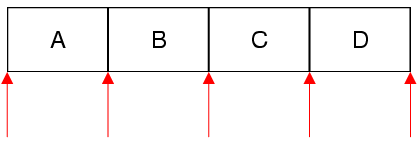QMutableVectorIterator Class ReferenceThe QMutableVectorIterator class provides a Java-style non-const iterator for QVector and QStack. More... #include <QMutableVectorIterator>Public Functions
Detailed DescriptionThe QMutableVectorIterator class provides a Java-style non-const iterator for QVector and QStack. QVector has both Java-style iterators and STL-style iterators. The Java-style iterators are more high-level and easier to use than the STL-style iterators; on the other hand, they are slightly less efficient. An alternative to using iterators is to use index positions. Most QVector member functions take an index as their first parameter, making it possible to access, insert, and remove items without using iterators. QMutableVectorIterator<T> allows you to iterate over a QVector<T> and modify the vector. If you don't want to modify the vector (or have a const QVector), use the slightly faster QVectorIterator<T> instead. The QMutableVectorIterator constructor takes a QVector as argument. After construction, the iterator is located at the very beginning of the list (before the first item). Here's how to iterate over all the elements sequentially: QVector<float> vector; ... QMutableVectorIterator<float> i(vector); while (i.hasNext()) qDebug() << i.next(); The next() function returns the next item in the vector and advances the iterator. Unlike STL-style iterators, Java-style iterators point between items rather than directly at items. The first call to next() advances the iterator to the position between the first and second item, and returns the first item; the second call to next() advances the iterator to the position between the second and third item, returning the second item; and so on.
Here's how to iterate over the elements in reverse order: QMutableVectorIterator<float> i(vector); i.toBack(); while (i.hasPrevious()) qDebug() << i.previous(); If you want to find all occurrences of a particular value, use findNext() or findPrevious() in a loop. If you want to remove items as you iterate over the vector, use remove(). If you want to modify the value of an item, use setValue(). If you want to insert a new item in the vector, use insert(). Example: QMutableVectorIterator<int> i(vector); while (i.hasNext()) { int val = i.next(); if (val < 0) { i.setValue(-val); } else if (val == 0) { i.remove(); } } The example traverses a vector, replacing negative numbers with their absolute values, and eliminating zeroes. Only one mutable iterator can be active on a given vector at any time. Furthermore, no changes should be done directly to the vector while the iterator is active (as opposed to through the iterator), since this could invalidate the iterator and lead to undefined behavior. See also QVectorIterator and QVector::iterator. Member Function Documentation
|
| Cette page est une traduction d'une page de la documentation de Qt, écrite par Nokia Corporation and/or its subsidiary(-ies). Les éventuels problèmes résultant d'une mauvaise traduction ne sont pas imputables à Nokia. | Qt 4.8 | |
| Copyright © 2012 Developpez LLC. Tous droits réservés Developpez LLC. Aucune reproduction, même partielle, ne peut être faite de ce site et de l'ensemble de son contenu : textes, documents et images sans l'autorisation expresse de Developpez LLC. Sinon, vous encourez selon la loi jusqu'à 3 ans de prison et jusqu'à 300 000 E de dommages et intérêts. Cette page est déposée à la SACD. | ||
| Vous avez déniché une erreur ? Un bug ? Une redirection cassée ? Ou tout autre problème, quel qu'il soit ? Ou bien vous désirez participer à ce projet de traduction ? N'hésitez pas à nous contacter ou par MP ! | ||
Copyright © 2000-2012 - www.developpez.com




















